Spreadsheets are a great way to start managing sales and inventory, but they quickly become complex and time-consuming as your business expands.
Upgrading to sales inventory software lets you centralize and automate stock tracking, order management and purchasing to save time and reduce errors.
In this article, you’ll learn what good inventory and sales software for small businesses looks like and which solution is best for you.
What is sales inventory software?
Sales inventory software tracks and manages sales activities and inventory levels in real-time, providing a complete view of product movement and availability.
This data lets you better serve customers and improve your company’s financial health.
With sales inventory software, small business owners can:
Avoid overstocking by keeping inventory levels optimal, which improves cash flow
Set up automated alerts that drive smarter purchasing decisions and ensure they never run out of stock
Forecast demand using sales data to make an accurate plan for peak periods that maximizes revenue
Increase stock lines and sales channels with confidence, knowing they have a platform that can scale with their business
Sales inventory software is about keeping products in stock and ensuring prompt delivery. It helps you increase customer satisfaction and profitability, giving you a solid foundation for sustainable growth.
Crush your manual admin with this sales automation guide
What to look for in sales inventory software
When it comes to inventory and sales software, there’s no one-size-fits-all tool. The right solution depends on your needs, goals and budget.
Here are six features to consider when making a decision:
1. User-friendly interface |
|
2. Integrations |
For instance, integrating software with Shopify lets you update stock levels at the time of sale, for faster and more accurate reports. |
3. Reporting |
|
| |
5. Scalability |
|
6. Pricing |
|
Work out which features you care about most to narrow your search. Create a shortlist of tools to explore further using free trials or sales demos.
7 top sales inventory software solutions
Knowing which features to look for can help you navigate a busy and competitive market.
Choosing the right solution can still be challenging, which is why we’ve compiled seven of the best sales inventory software solutions. We’ve categorized them by the type of companies they best suit.
1. Pipedrive: best for integrating sales and e-commerce
Pipedrive is a customer relationship management (CRM) system that excels at helping teams track sales and close deals. These attributes make it a strong choice for B2B brands looking to integrate sales and e-commerce workflows.
Use the dedicated Products feature to track your sales.
Create a product information management (PIM) system by adding SKUs, descriptions and prices
Attach products to deals to monitor what you sell and to whom
Leverage built-in reports to track product performance
Bundle individual products into packages or deals
Use custom fields to add warehouse information like available units and estimated delivery times to each deal
Here’s an example of a product detail page in Pipedrive:
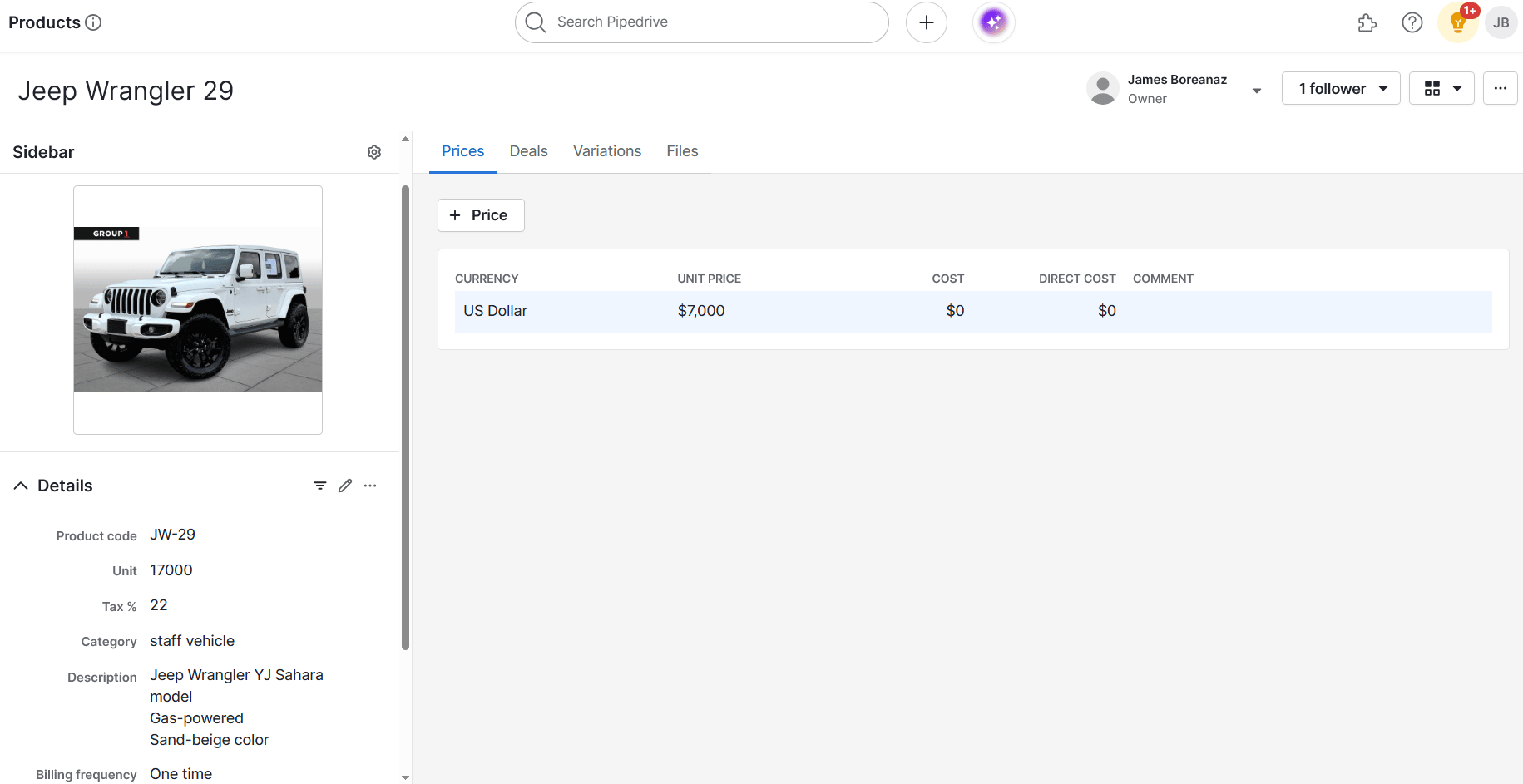
Generate quotes for sales using the Smart Docs feature to keep everything in one place. If you have a template with product placeholders, Pipdrive will automatically add product details to the document like this:
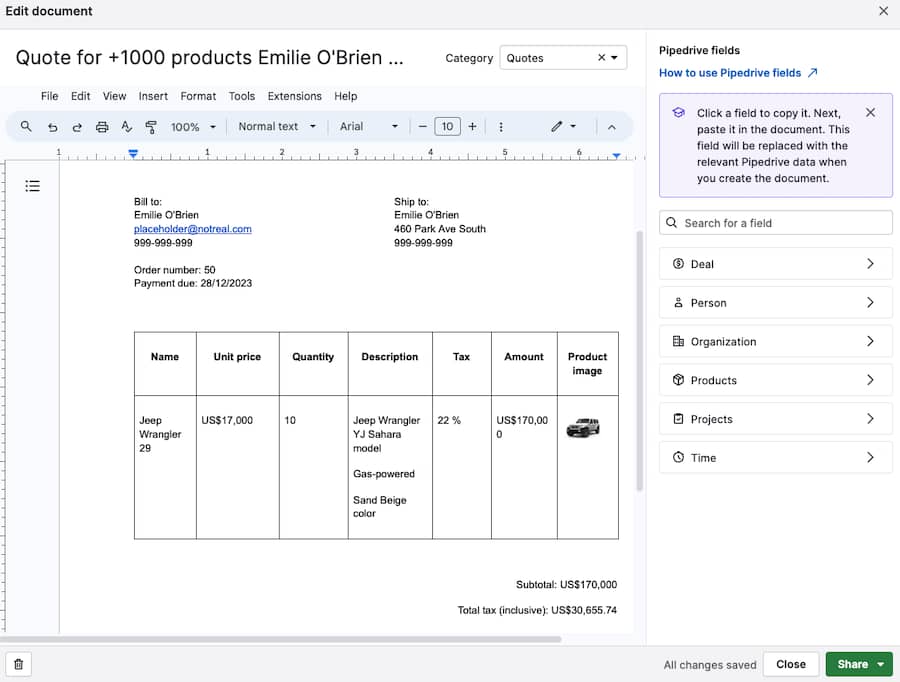
Pipedrive can also forecast future inventory requirements, making ordering more stock on time easy.
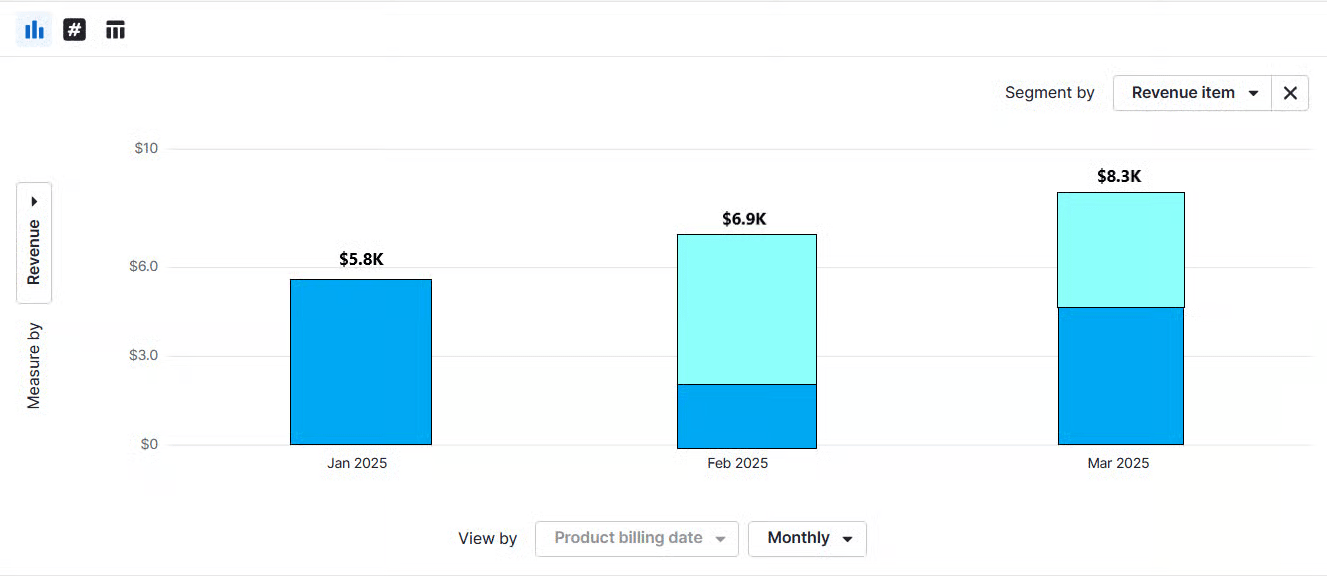
Its product revenue forecast report (shown above) visualizes your sales pipeline so you can see which products you expect to sell and when. This feature is available on Advanced and higher plans.
Note: Teams needing more advanced inventory tracking can integrate Pipedrive with dedicated warehouse and logistics platforms like MRPeasy, QuickBooks and Katana.
Events in one platform trigger actions in another to keep both systems up to date. So, when a deal reaches a certain stage in Pipedrive, it automatically creates an order in MRPeasy. Once you mark the order as shipped in MRPeasy, your Pipedrive deal will automatically move to the next stage.
Key features:
User-friendly pipeline management with drag-and-drop deal tracking simplifies your sales workflows
Customizable pipelines let you build inventory and fulfillment workflows from scratch
Real-time dashboards and AI-generated reports make it easy to find answers and access up-to-date information
Pricing: The Advanced plan costs $39 per seat, per month, billed annually. A 14-day free trial is available.
2. QuickBooks Online: best for integrating accounting and bookkeeping
QuickBooks Online is a popular cloud-based accounting solution. Its inventory management capabilities make it useful for small businesses that want to keep finance and inventory records in one place.
QuickBooks Online accesses your financial information to automate tedious tasks such as bank reconciliation, invoicing and expense tracking – freeing you up to focus on the bigger picture.
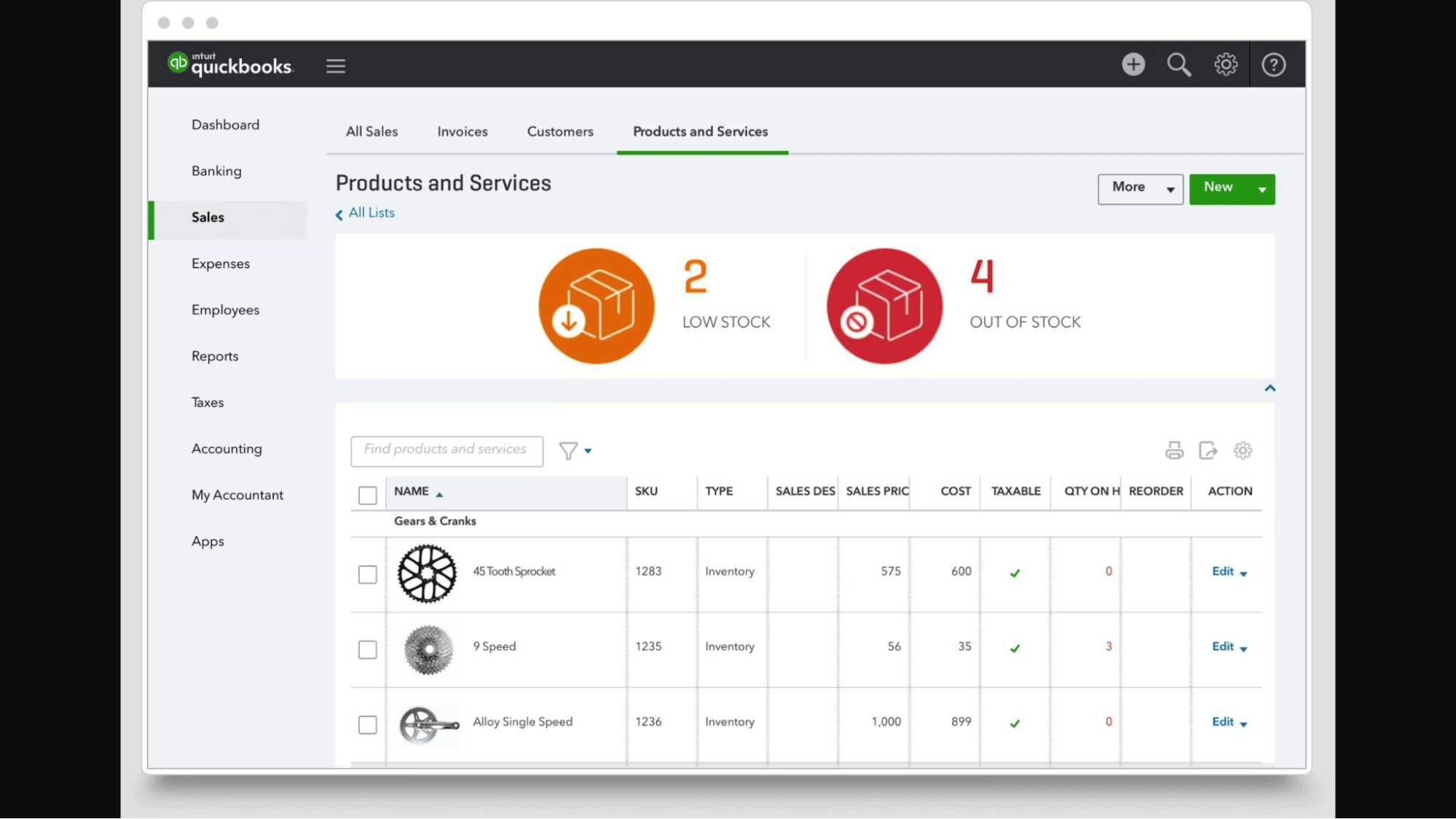
It also automates financial reports, like updating your balance sheet as your stock changes, so you have accurate information when making purchasing decisions.
Note: QuickBooks integrates with Pipedrive, letting you create and send invoices within your CRM.
Key features:
Integrations with sales platforms combine data from multiple channels, giving you a complete view of revenue
Real-time inventory tracking and alerts make it easy to see what you’ve ordered from each supplier and place new orders when stocks are low
Detailed financial and inventory sales reports visualize key data so you can easily assess performance
Pricing: Inventory tracking is available on Plus plans, which cost $40 per month and come with a 30-day free trial.
3. Odoo: best free and open-source inventory management software
Odoo is a free, flexible and open-source inventory and warehouse management solution. It’s suitable for any small business that wants to start without a big investment.
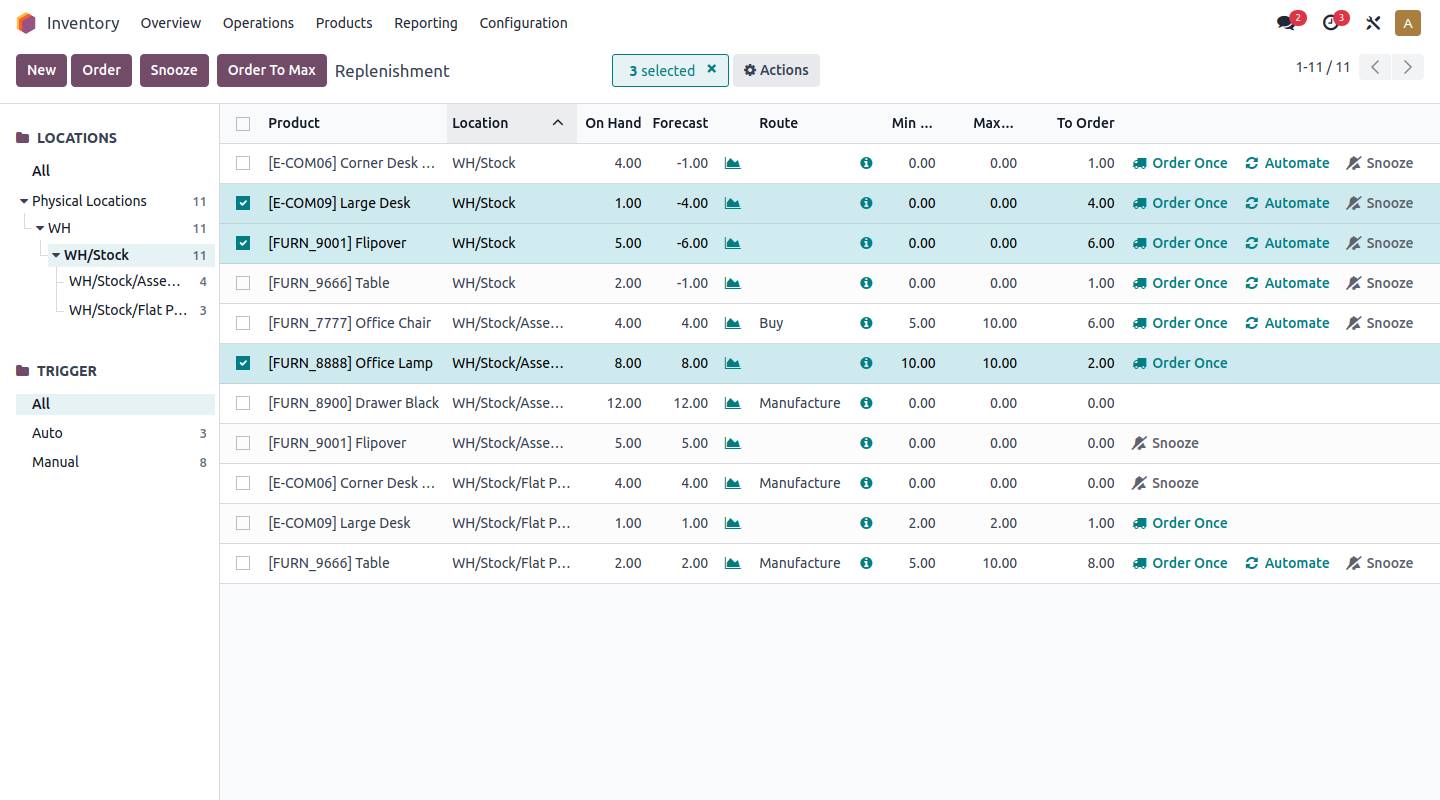
Odoo supports everything from basic stock control to advanced automated workflows. Bigger retailers can manage multiple warehouses and perform advanced inventory processes, like cross-docking, backorders and dropshipping.
Note: Odoo’s free tool lacks some advanced features exclusive to the higher-tier paid option. For example, it’s limited in advanced CRM functions, workflow automation, marketing automation and complex project management.
Key features:
Option to set min-max rules and automated replenishing workflows to order stock automatically. Ordoro automates follow-up emails with vendors to minimise delays and misunderstandings.
Scanning functionality lets you quickly track stock. Odoo supports barcode, QR codes and GS-1 formats, automating manual processes and speeding up fulfillment.
Detailed reports let everyone visualize inventory levels in a way that makes sense to them. You can sort by serial numbers, SKUs, destinations and document numbers, making it easy to quickly find the information you need.
Pricing: Your first application is free forever, including hosting and support. Businesses with additional requirements will need to pay an additional fee.
4. Cin7: best for predictive analytics
Cin7 is a cloud-based inventory platform for retailers, wholesalers and distributors.
It tracks inventory in real time, integrates with over 700 business applications and has robust reporting features.
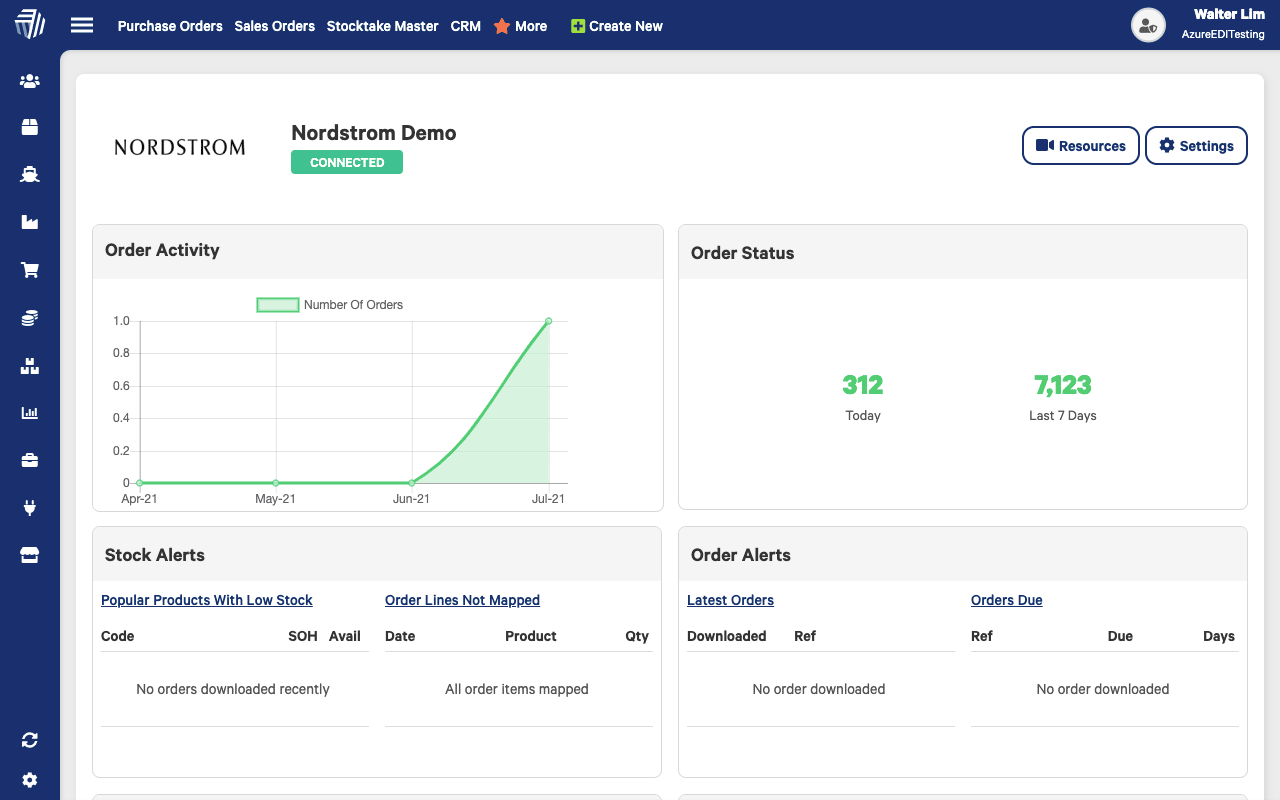
Cin7 ForesightAI delivers precise demand forecasting so you always have the right amount of stock available. It reduces waste, increases revenue and helps you keep customers happy.
Key features:
It combines point of sale (POS), inventory tracking and e-commerce tools, reducing your subscription fees
Sales channel integrations ensure inventory levels are always accurate, no matter where orders come from
Advanced warehouse management features track inventory in multiple locations and integrate with 3PL shipping providers
Pricing: Plans start from $349 per month. Cin7 ForesightAI Forecasting is available as an add-on, and pricing is available on request.
5. inFlow: best for businesses with multiple locations
inFlow is an inventory management solution for small businesses that store stock in multiple locations.
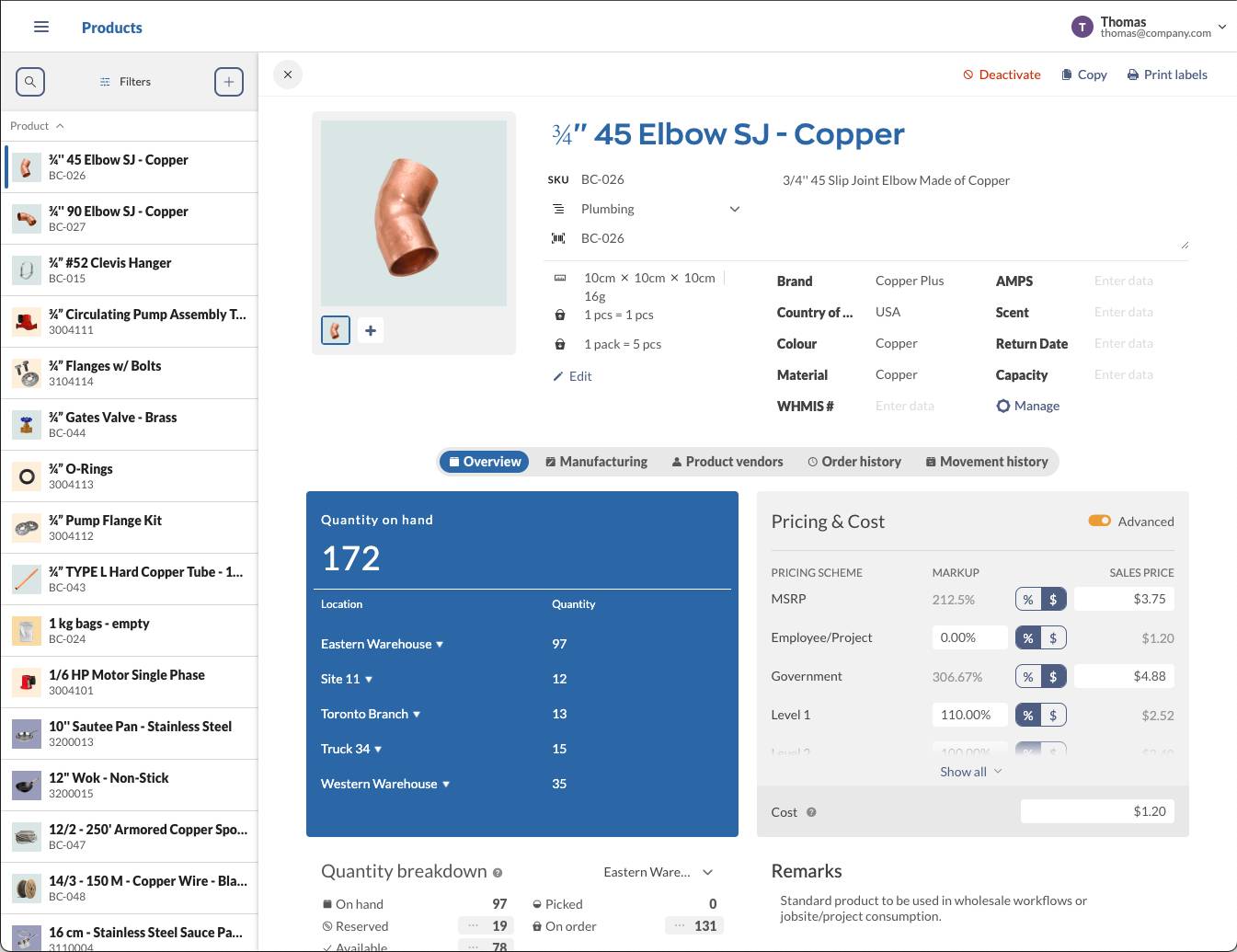
Detailed inventory control lets you see which aisle, bin or rack you store products on and how many are there.
It also separates records by warehouse, helping you track inventory from location to location and speed up stock takes. It even logs every transaction, providing complete visibility and accountability.
Key features:
Barcode scanning and generation make product identification and stocktaking fast and error-free
A B2B sales showroom lets sales reps send interactive brochures to customers, compete with stock levels, pictures and pricing
Integrations with dozens of e-commerce platforms centralize sales and inventory data in one place
Pricing: Plans start at $149 per month, billed annually.
6. Ordoro: best for e-commerce stores
Ordoro is an all-in-one inventory and order management platform specifically for e-commerce businesses.
Three distinct apps (shipping, inventory and dropshipping) help small retailers manage and grow sales through a single platform.
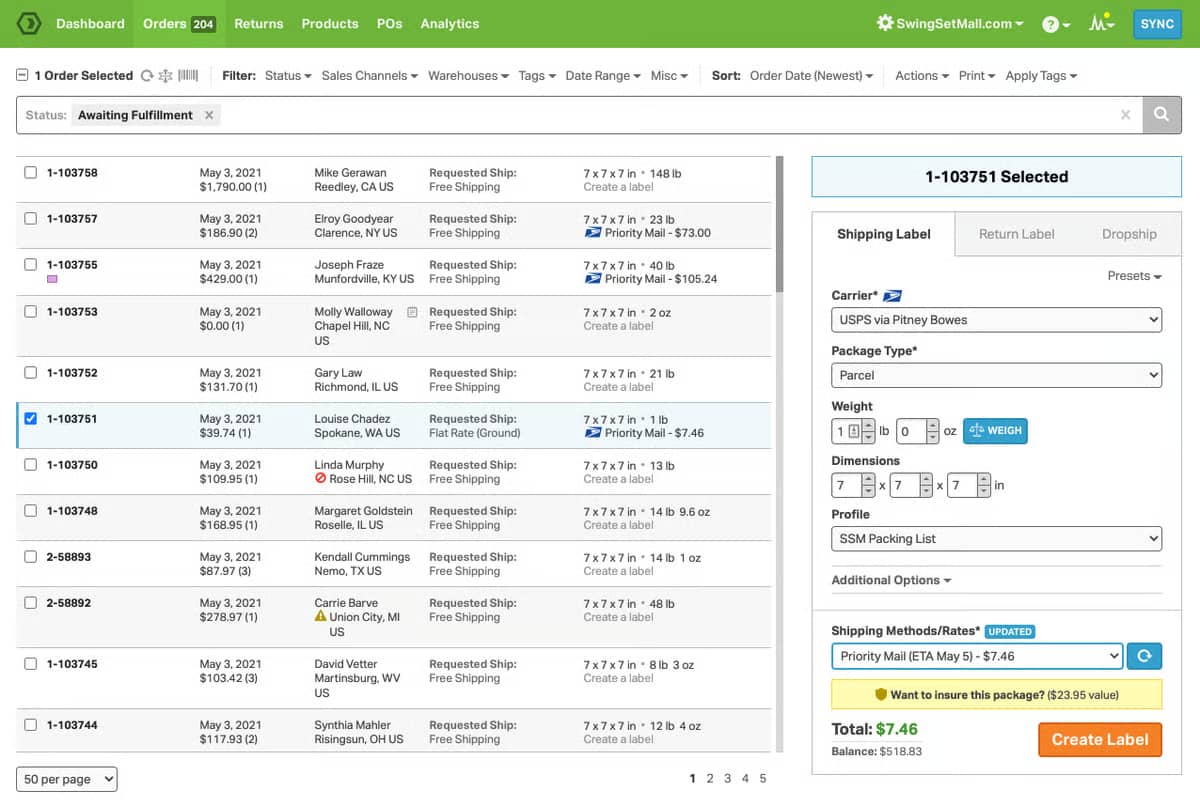
Ordoro’s inventory management features sync stock levels across sales channels to improve inventory counts and prevent overselling.
It also sends alerts when stocks are low and automates the reordering process, creating purchase orders and receipts.
Key features:
Shipping tools let you create and print shipping labels without leaving the platform
Kitting and bundling functionality lets you combine products into a single offering to increase sales and average order value
Customizable reports identify your best sellers and buyers, and ways to make your store more profitable
Pricing: Plans start at $349 per month, with a 15-day free trial
7. Katana MRP: best for businesses with many SKUs
Katana MRP is a modern sales and inventory management software with unlimited SKUs on every plan. It’s ideal if you sell hundreds of products.
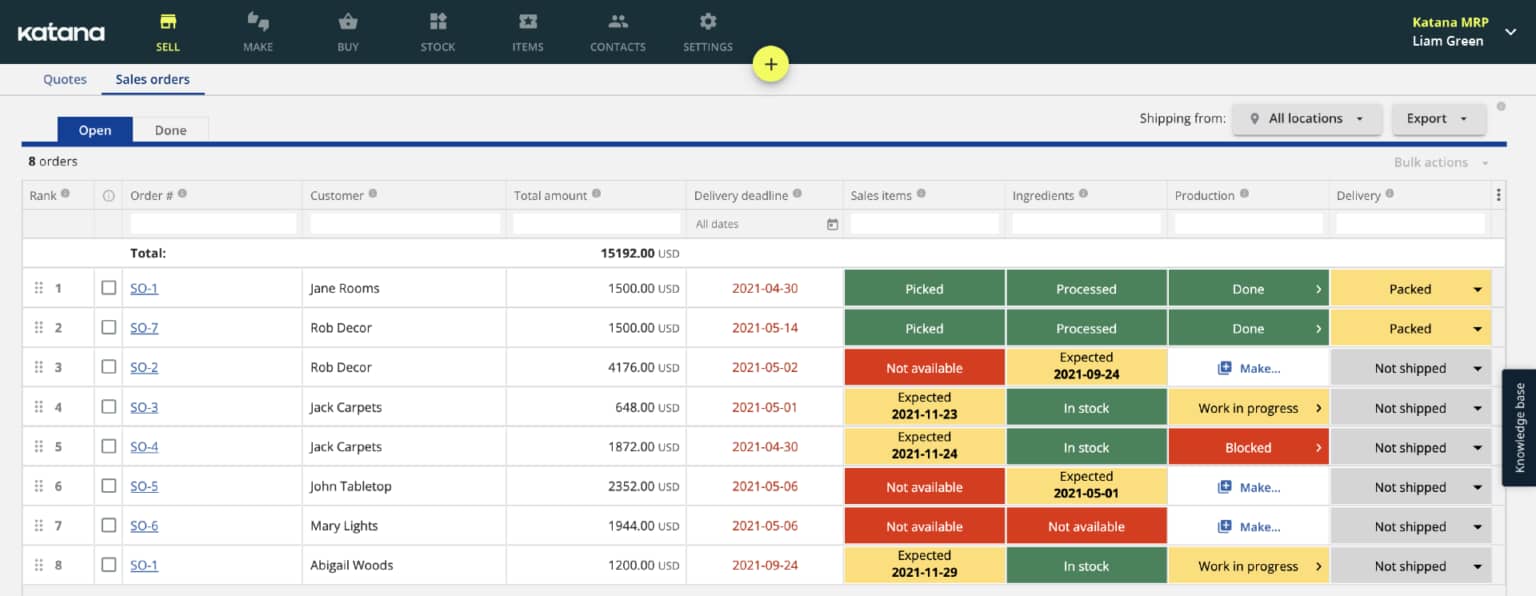
Katana’s real-time inventory tracking ensures you always have products on hand for order fulfillment.
The platform integrates dozens of sales channels like Amazon, Walmart and eBay to centralize your sales data, track your performance and find your best customers.
Key features:
Data-driven demand forecasting accurately predicts demand by analyzing historical sales data
An AI assistant, KAI, automates manual tasks like creating purchase orders and generating reports, so you can spend time on high-value activities
An implementation service helps accelerate time to value
Pricing: Plans start at $359 per month, billed annually. A demo is available.
Why your business needs sales inventory software
Spreadsheet-based sales and inventory management tools are time-consuming and prone to human error.
Switching to a software solution lets you automate processes, access real-time data and even add AI to your workflows. It helps you do the following:
Create more dynamic and resilient supply chains. In the face of economic uncertainty, 53% of retail operations leaders are prioritizing building more resilient supply chains. Sales inventory software helps small businesses diversify suppliers and implement other strategies that increase supply chain resiliency.
Prevent overstocking and stockouts with automation. Automated inventory reordering reduces the likelihood of stockouts, which cost global retailers $1 trillion in annual sales.
Improve cash flow through better inventory planning. Retailers have an average overstock value of $560,000. Use real-time notifications and automated reordering processes to maintain optimal stock levels.
Forecast future demand accurately using AI. An AI-powered software solution analyzes historical data to predict future sales. McKinsey finds AI-based forecasting improves accuracy by 15% to 20%, which can lead to 2% to 3% revenue increases.
Sales inventory software also helps small businesses, like California-based e.l.f. Cosmetics, pivot to new opportunities.
Trading its spreadsheet-based inventory management system for dedicated software helped the retailer switch primary revenue streams from B2C to B2B sales and launch on major retail platforms like Amazon, Target and Walmart.
Final thoughts
Sales inventory software streamlines stock management and helps you get orders out the door on time. It improves customer satisfaction and creates a foundation for future business growth.
Consider your business’s unique needs and workflow preferences when choosing sales inventory software. Pipedrive is a great choice if you’re looking to integrate sales, e-commerce and inventory data and improve forecasting and reporting.
Try it free for 14 days to test all of its features and see how it can simplify your retail operations.






